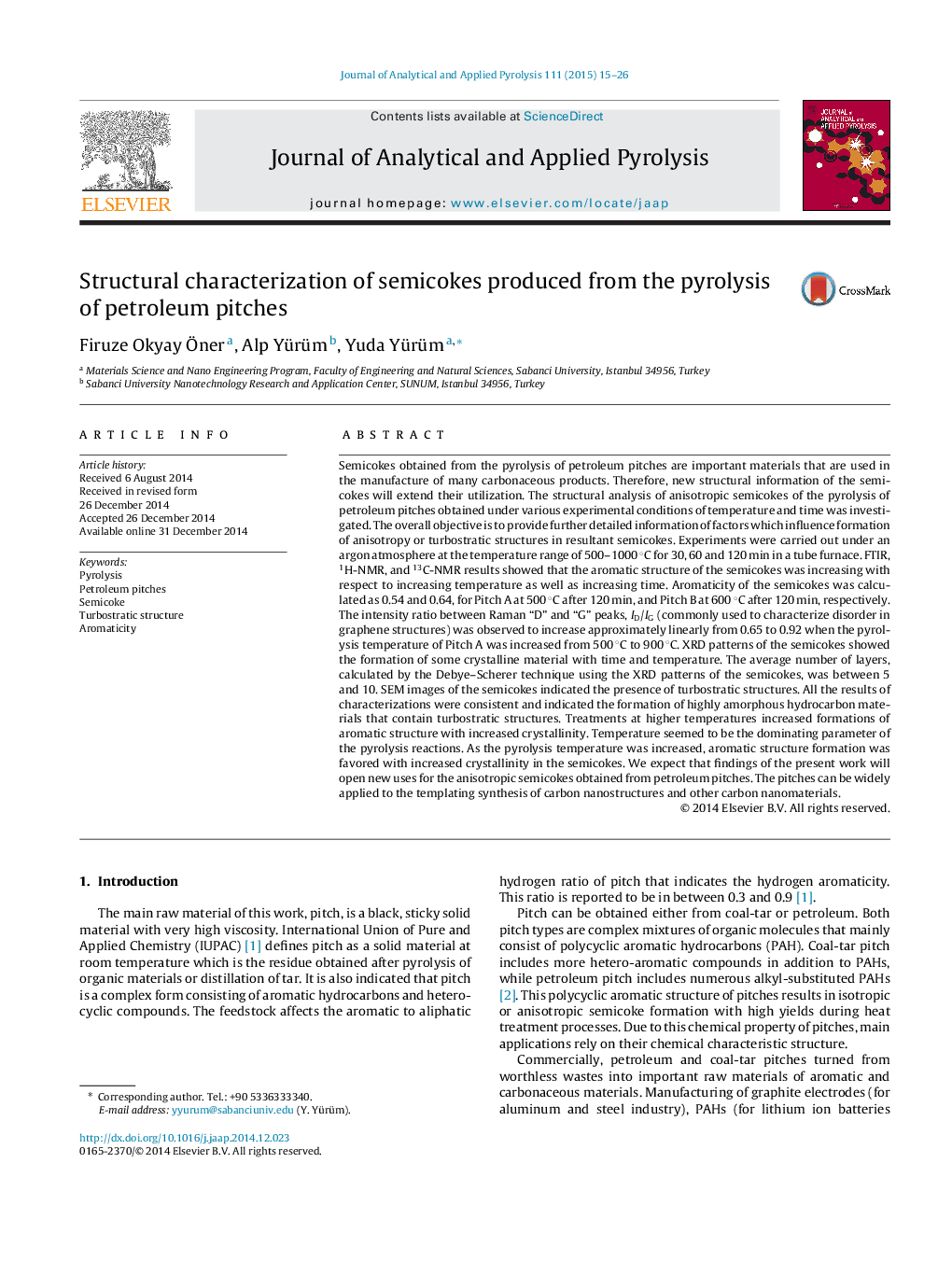| Article ID | Journal | Published Year | Pages | File Type |
|---|---|---|---|---|
| 1196698 | Journal of Analytical and Applied Pyrolysis | 2015 | 12 Pages |
•The overall objective is to provide further detailed information of factors which influence formation of anisotropy or turbostratic structures in resultant semicokes.•The structural analysis of anisotropic semicokes of the pyrolysis of petroleum pitches obtained under various experimental conditions of temperature and time was investigated.•FTIR, 1H-NMR, and 13C-NMR results showed that the aromatic structure of the semicokes was increasing with respect to increasing temperature as well as increasing time.•XRD patterns of the semicokes showed the formation of some crystalline material with time and temperature.•All the results of characterizations were consistent and indicated the formation of highly amorphous hydrocarbon materials that contain turbostratic structures.•We expect that findings of the present work will open new uses for the anisotropic semicokes obtained from petroleum pitches.
Semicokes obtained from the pyrolysis of petroleum pitches are important materials that are used in the manufacture of many carbonaceous products. Therefore, new structural information of the semicokes will extend their utilization. The structural analysis of anisotropic semicokes of the pyrolysis of petroleum pitches obtained under various experimental conditions of temperature and time was investigated. The overall objective is to provide further detailed information of factors which influence formation of anisotropy or turbostratic structures in resultant semicokes. Experiments were carried out under an argon atmosphere at the temperature range of 500–1000 °C for 30, 60 and 120 min in a tube furnace. FTIR, 1H-NMR, and 13C-NMR results showed that the aromatic structure of the semicokes was increasing with respect to increasing temperature as well as increasing time. Aromaticity of the semicokes was calculated as 0.54 and 0.64, for Pitch A at 500 °C after 120 min, and Pitch B at 600 °C after 120 min, respectively. The intensity ratio between Raman “D” and “G” peaks, ID/IG (commonly used to characterize disorder in graphene structures) was observed to increase approximately linearly from 0.65 to 0.92 when the pyrolysis temperature of Pitch A was increased from 500 °C to 900 °C. XRD patterns of the semicokes showed the formation of some crystalline material with time and temperature. The average number of layers, calculated by the Debye–Scherer technique using the XRD patterns of the semicokes, was between 5 and 10. SEM images of the semicokes indicated the presence of turbostratic structures. All the results of characterizations were consistent and indicated the formation of highly amorphous hydrocarbon materials that contain turbostratic structures. Treatments at higher temperatures increased formations of aromatic structure with increased crystallinity. Temperature seemed to be the dominating parameter of the pyrolysis reactions. As the pyrolysis temperature was increased, aromatic structure formation was favored with increased crystallinity in the semicokes. We expect that findings of the present work will open new uses for the anisotropic semicokes obtained from petroleum pitches. The pitches can be widely applied to the templating synthesis of carbon nanostructures and other carbon nanomaterials.
